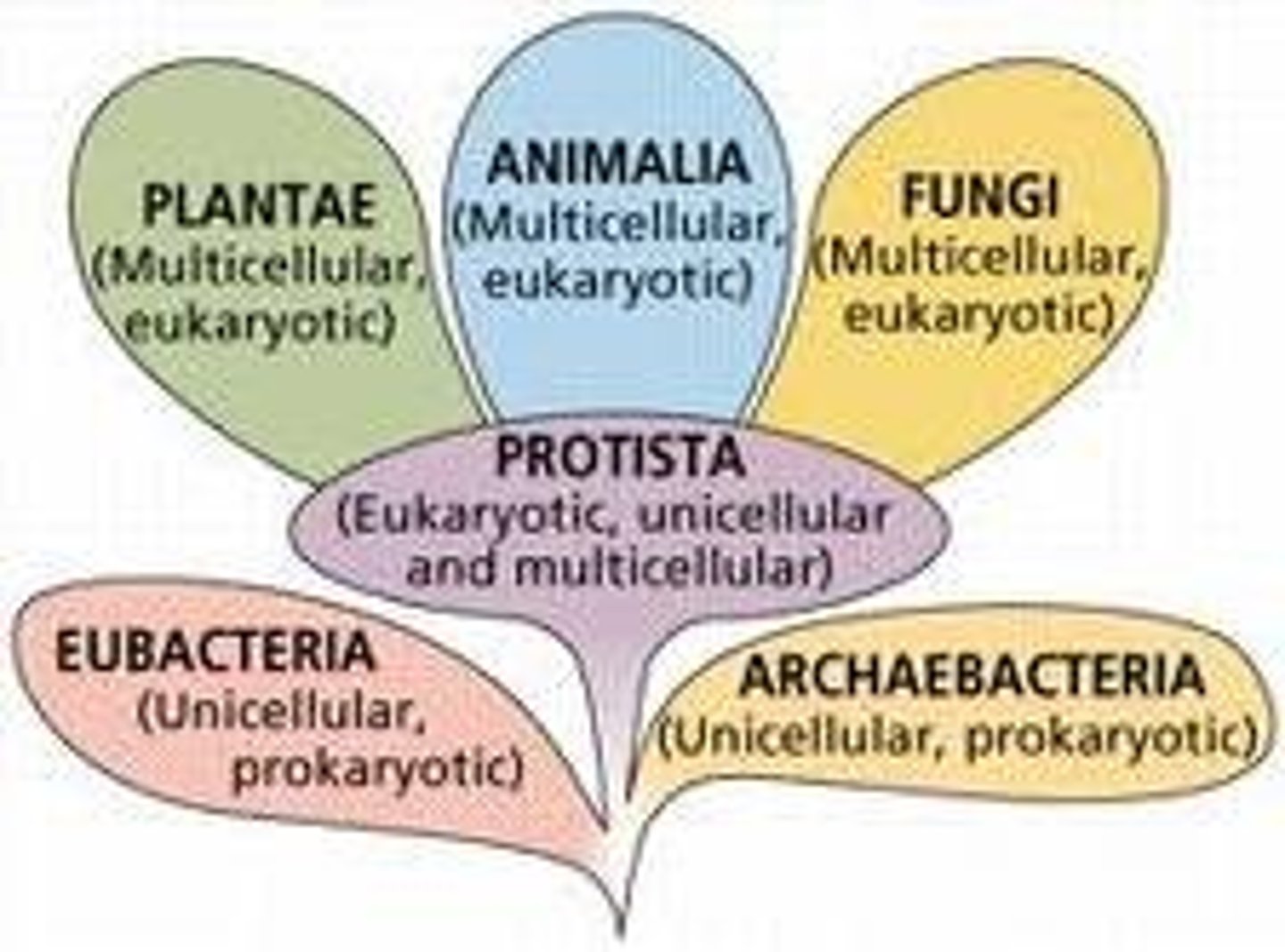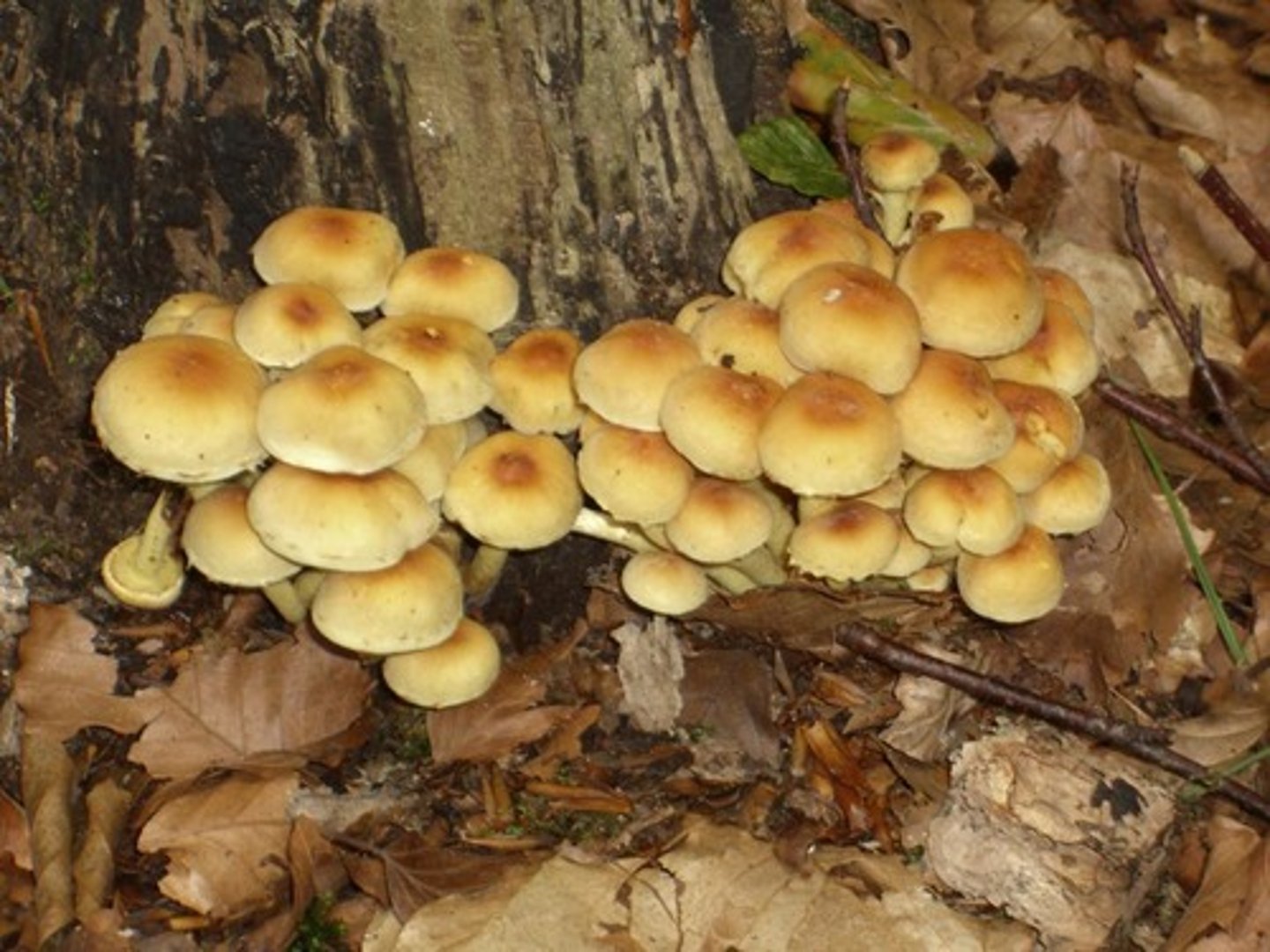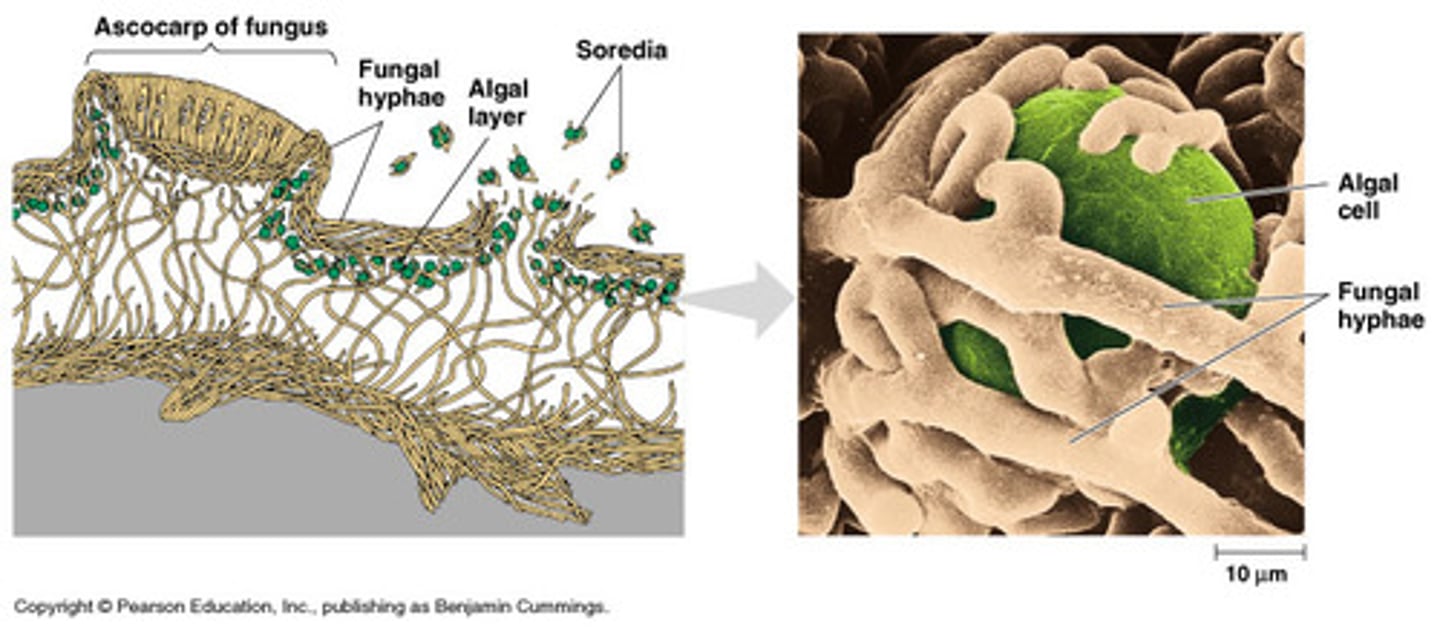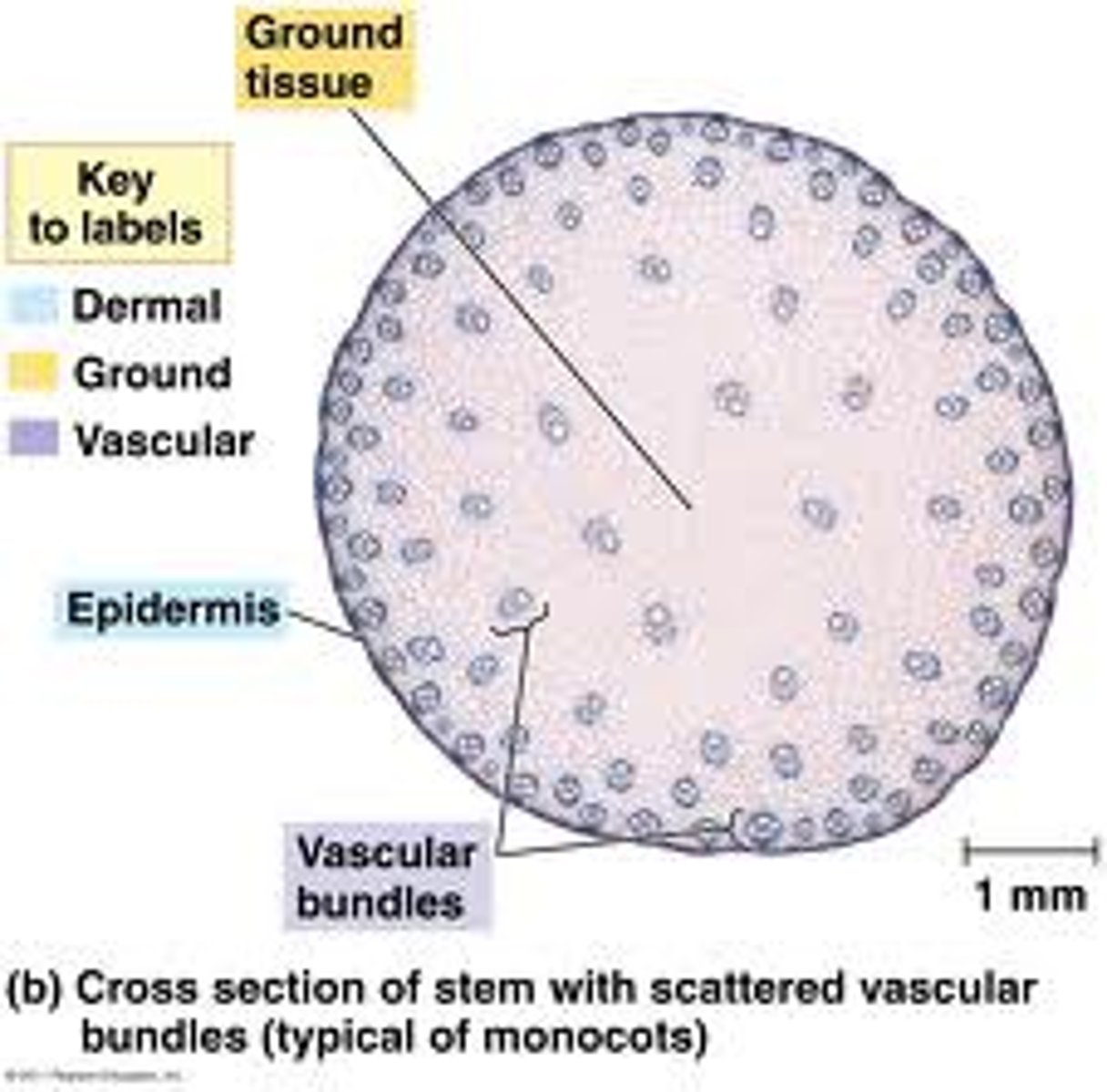2: Fungi, lichens, algae, angiosperms
1/43
There's no tags or description
Looks like no tags are added yet.
Name | Mastery | Learn | Test | Matching | Spaced |
|---|
No study sessions yet.
44 Terms
5 kingdoms of life
Plants, Animals, Bacteria, Protists, Archaea and Fungi

protist
a eukaryotic organisms that is not an animal, plant, or fungus (usually unicellular)
how many species of fungus are known, and how many might actually exist?
70,000 known
over 1,000,000 might exist
fungi nutrition
heterotrophic
fungi reproductive structures
spores
roles played by fungi
decomposers, mutualists, parasites
fungi as decomposers
fungi are efficient decomposers of organic material including cellulose and lignin - carbon sequestrian in organic matter of soil
fungi as mutualists
form mutualistic relationships with plants, algae, cyanobacteria, and animals using mycorriza and lichens
__% of plant species are mycorrhizal
80
mycorhizzae
mutualistic association between a fungus and a plant's roots in which the fungus provides minerals for the plant and the plant provides food for the fungus
fungi evolved in
water c. 1.5 bya
oldest terrestrial fossil fungi
460 mya
examples of fungi as parasites
zombie ant
ringworm
honey fungus
fungal reproduction and life cycle
haploid or diploid
armillaria
a pathogenic fugnus affecting conifers; possibly the world's larges single organism; reproduce by forming spores; most have a body composed of hyphae

plasmogamy
fusion of cytoplasms (of two parent mycelia)
karyogamy
fusion of 2 haploid nuclei to form a diploid nucleus
endosymbiosis
one organism living inside of another organism
primary endosymbiosis
The engulfment of a cyanobacterium by a larger eukaryotic cell that gave rise to the first photosynthetic eukaryotes with chloroplasts.
endosymbiosis gave rise to
chloroplasts and mitochondria
there were originally __ membranes, but __ was lost in red and green algal descendents
3, 1
red algae live mostly
aquatic, multicellular
green algae live
terrestrial
diatoms
A unicellular photosynthetic alga with a unique glassy cell wall containing silica
brown algae and diatoms evolved from
red algae
_____ the oxygen on earth is generated by algae through _____
half, photosynthesis
algae as an energy source
oil shales (alaskan deposits yield 150 gallons oil)
algal biofuel plants
____ species of lichens described
17.000
lichen
unicellular or filamentous green algae or cyanobacteria living among the filaments (hyphae) of a fungus

3 examples of algal lichens
trebouxia, trentepolia, nostoc
biston betularia shows
peppered moth shows industrial melanism
how do lichens reproduce
asexually or sexually
asexual lichen reproduction
fragmentation or soredia
sexual lichen reproduction
fungi via ascospores
order of plantae kingdom development
algae , bryophytes, pteridophytes, gymnosperms, angiosperms
soredia
small clusters of hyphae with embedded algae

soralium vs apothecium
soralium = soredia
apothecium = ascospores
how do bryophytes transport water
diffusion and osmosis - no vascular system
vascular bundle
plant stem structure that contains xylem and phloem tissue

pteridophytes aka
ferns
seed
embryonic plant enclosed in a protective outer coating
gymno sperm
naked seed
angio sperm
receptacle seed
angiosperms make up __% of all plants, with over _____ species
80,
300,000